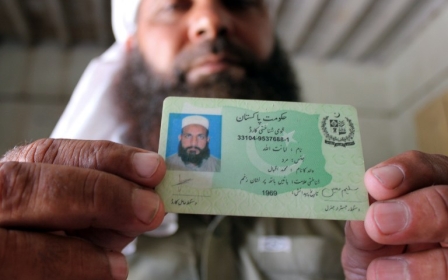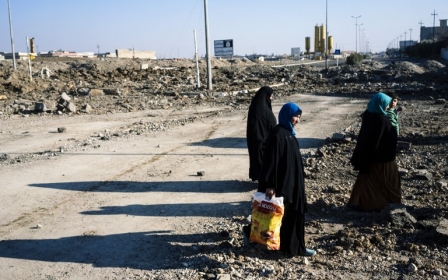US Supreme Court decides to keep CIA 'torture report' secret
The US Supreme Court on Monday turned back an appeal by rights groups seeking to make public a report on the CIA's post-September 11 torture programme, ensuring it will remain secret.
The court rebuffed arguments from the American Civil Liberties Union that the highly classified report, compiled in 2014 by the Senate Intelligence Committee, should be released based on US government transparency rules.
"We are disappointed by this major setback for government transparency and accountability. The full report is the definitive account of one of the darkest chapters in our nation's history, and the public has a right to see it," said Hina Shamsi, director of the ACLU National Security Project.
The Supreme Court's decision left in place a ruling by the federal court in Washington that judged the report did not fall under rules that require certain government records be made public.
The 6,700 page report examined in depth the Central Intelligence Agency's programme of secret detention and torture of al-Qaeda suspects in the wake of the 9/11 attacks.
It details the rendition of suspects to CIA "black sites" and the use of illegal torture methods like waterboarding on them to extract information.
It also reportedly deeply questioned the effectiveness of the techniques, later banned by President Barack Obama.
About 500 pages were declassified for public release in 2014 when the report was completed, with enough information to bring heavy criticism on the CIA and the government of president George W Bush, which authorised the programme.
The 500-page summary details well-known CIA methods: waterboarding, forced nudity and slamming inmates against walls. Sleep deprivation was used on detainees for bouts of 180 hours – longer than a week – until some were left dazed and hallucinating.
Five inmates endured “rectal rehydration,” an anal intervention that was undertaken without any medical need. Others were shackled in darkness, bombarded with loud music, forced into “ice baths” and told that their family members would be executed.
One died from hypothermia while chained to a concrete floor in 2002. During one of his 83 waterboarding sessions, alleged al-Qaeda detainee Abu Zubaydah became “completely unresponsive with bubbles rising through his open full mouth,” researchers said.
“These harsh methods were not only inconsistent with our values as a nation, they did not serve our broader counterterrorism efforts or our national security interests,” then-US President Obama said in a statement after the summary’s release.
The CIA has rejected some of its conclusions, and some politicians say it supports arguments for torturing suspects.
Only a handful of copies of the full report exist, distributed to several government departments and intelligence bodies.
Fearing that those copies could be destroyed to eliminate any detailed record of the torture programme, Obama in December said one copy would be held in his presidential library, to be built in Chicago.
Obama refused to declassify the report, but said it would become open to the public in 12 years.
However, even after 12 years, the report may still remain classified.
“CIA or other agencies may contend that all or some of the classified information in the report is still classified 12 years from now,” Steven Aftergood, an intelligence policy expert at the Federation of American Scientists told the Guardian in December.
When the 12 year limit is finished, agencies could begin to declassify the report if they want to, “but the review may conclude that the information in it should remain classified,” Aftergood added.
New MEE newsletter: Jerusalem Dispatch
Sign up to get the latest insights and analysis on Israel-Palestine, alongside Turkey Unpacked and other MEE newsletters
Middle East Eye delivers independent and unrivalled coverage and analysis of the Middle East, North Africa and beyond. To learn more about republishing this content and the associated fees, please fill out this form. More about MEE can be found here.




